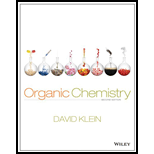
(a)
Interpretation:
The selective reagents used to accomplish the given transformation should be draw and identified.
Concept Introduction:
Role of sodium amide: The strong base of
Anti-Markovnikov addition: These rules describe the regioselectivity (particular place in functional group) where the substituent is bonded to a less substituted carbon, rather than the more substituted carbon. This placed is quite unusual as carbon cations which are commonly formed during
Reduction property of 9-BBN: This reagent selectively reduced for carbon-carbon triple bond converted into bouble bond. The hydrogen ends up bond to the most substituted carbon and the stereo chemistry of the reaction is syn both new bonds are formed on the same face of the alkene.
(b)
Interpretation:
The selective reagents used to accomplish the given transformation should be draw and identified.
Concept Introduction:
Role of sodium amide: The strong base of
Anti-Markovnikov addition: These rules describe the regioselectivity (particular place in functional group) where the substituent is bonded to a less substituted carbon, rather than the more substituted carbon. This placed is quite unusual as carbon cations which are commonly formed during alkene or alkyne reactions tend to favor the more substituted carbon.
Reduction property of 9-BBN: This reagent selectively reduced for carbon-carbon triple bond converted into bouble bond. The hydrogen ends up bond to the most substituted carbon and the stereo chemistry of the reaction is syn both new bonds are formed on the same face of the alkene.
Want to see the full answer?
Check out a sample textbook solution
Chapter 10 Solutions
Organic Chemistry
 ChemistryChemistryISBN:9781305957404Author:Steven S. Zumdahl, Susan A. Zumdahl, Donald J. DeCostePublisher:Cengage Learning
ChemistryChemistryISBN:9781305957404Author:Steven S. Zumdahl, Susan A. Zumdahl, Donald J. DeCostePublisher:Cengage Learning ChemistryChemistryISBN:9781259911156Author:Raymond Chang Dr., Jason Overby ProfessorPublisher:McGraw-Hill Education
ChemistryChemistryISBN:9781259911156Author:Raymond Chang Dr., Jason Overby ProfessorPublisher:McGraw-Hill Education Principles of Instrumental AnalysisChemistryISBN:9781305577213Author:Douglas A. Skoog, F. James Holler, Stanley R. CrouchPublisher:Cengage Learning
Principles of Instrumental AnalysisChemistryISBN:9781305577213Author:Douglas A. Skoog, F. James Holler, Stanley R. CrouchPublisher:Cengage Learning Organic ChemistryChemistryISBN:9780078021558Author:Janice Gorzynski Smith Dr.Publisher:McGraw-Hill Education
Organic ChemistryChemistryISBN:9780078021558Author:Janice Gorzynski Smith Dr.Publisher:McGraw-Hill Education Chemistry: Principles and ReactionsChemistryISBN:9781305079373Author:William L. Masterton, Cecile N. HurleyPublisher:Cengage Learning
Chemistry: Principles and ReactionsChemistryISBN:9781305079373Author:William L. Masterton, Cecile N. HurleyPublisher:Cengage Learning Elementary Principles of Chemical Processes, Bind...ChemistryISBN:9781118431221Author:Richard M. Felder, Ronald W. Rousseau, Lisa G. BullardPublisher:WILEY
Elementary Principles of Chemical Processes, Bind...ChemistryISBN:9781118431221Author:Richard M. Felder, Ronald W. Rousseau, Lisa G. BullardPublisher:WILEY





